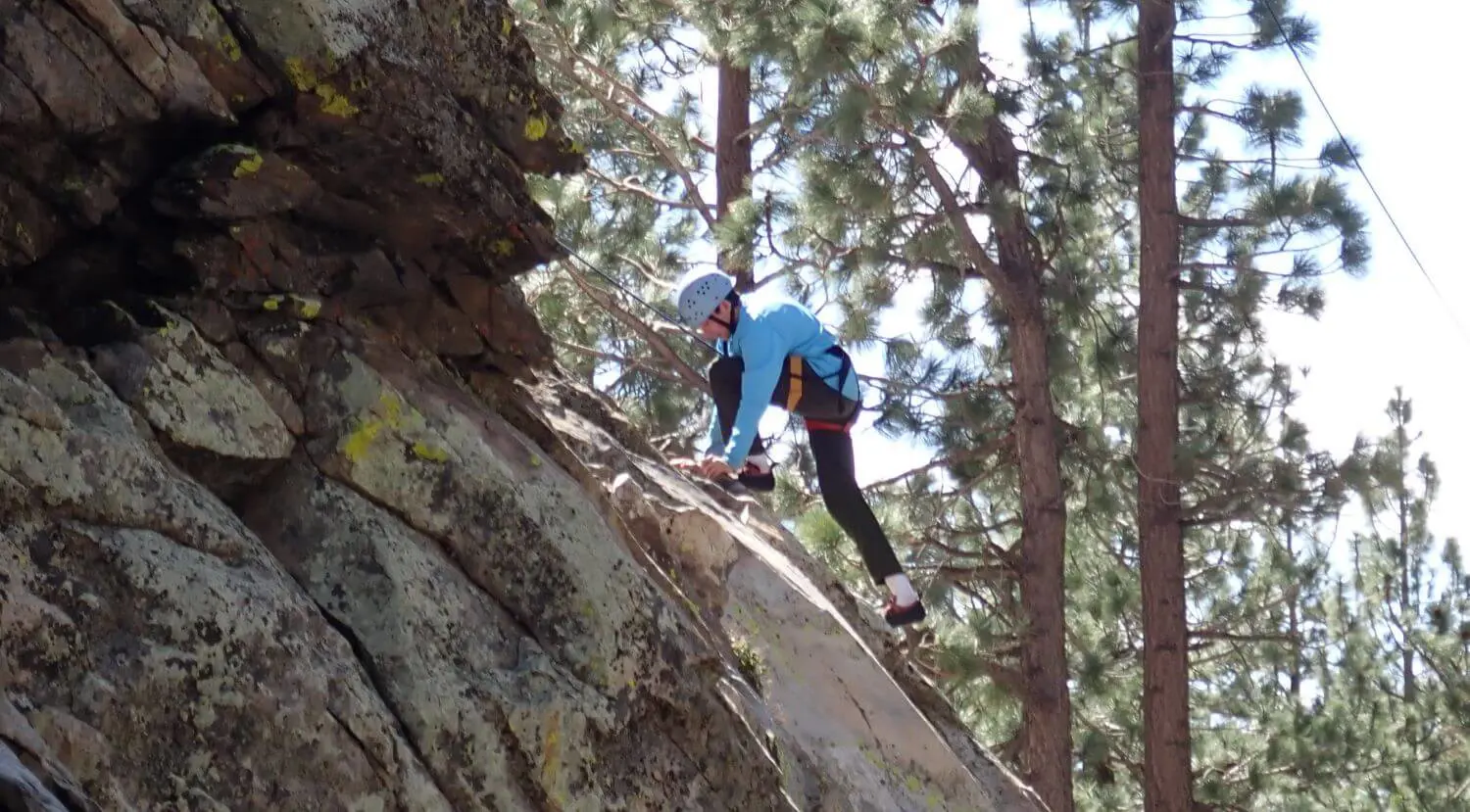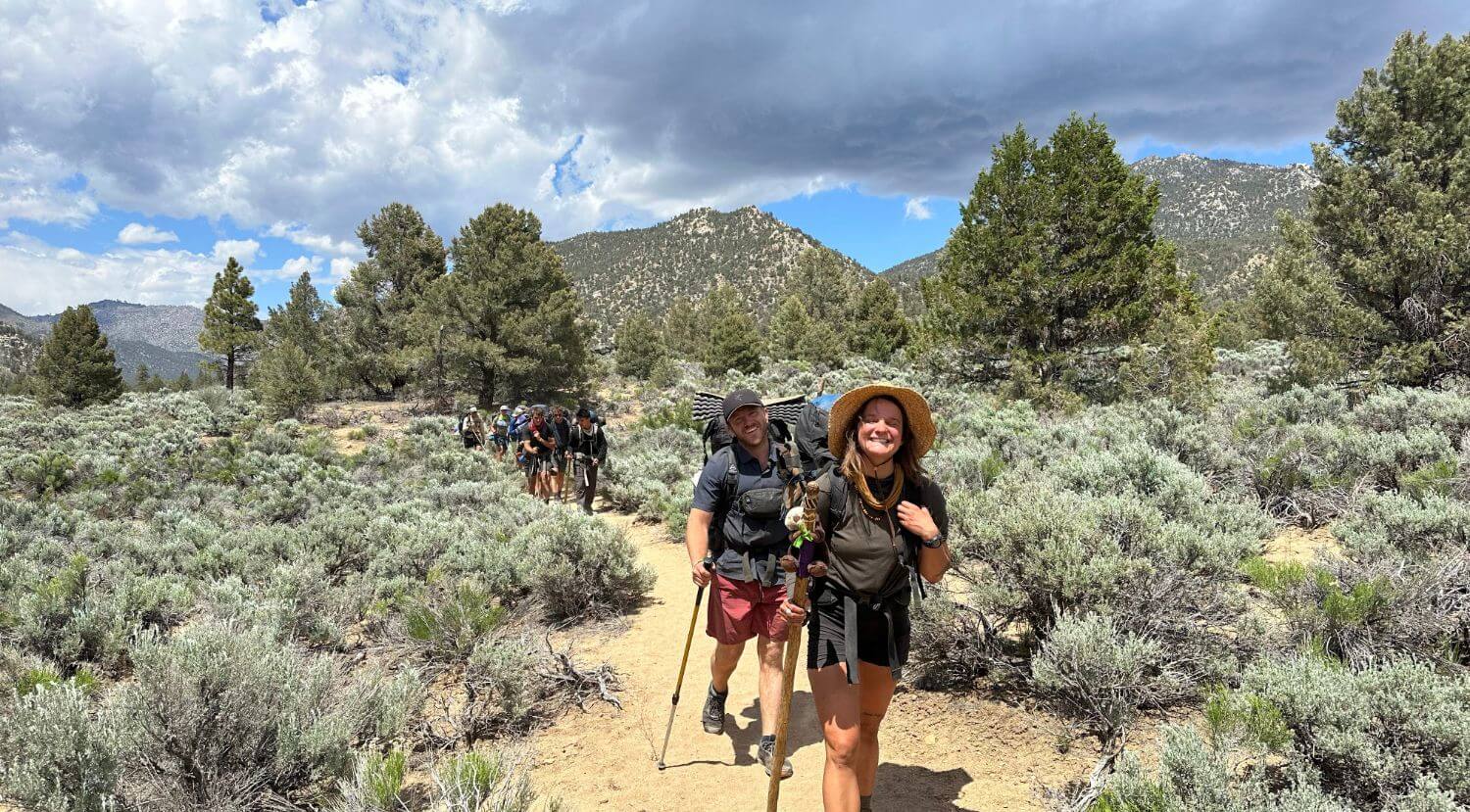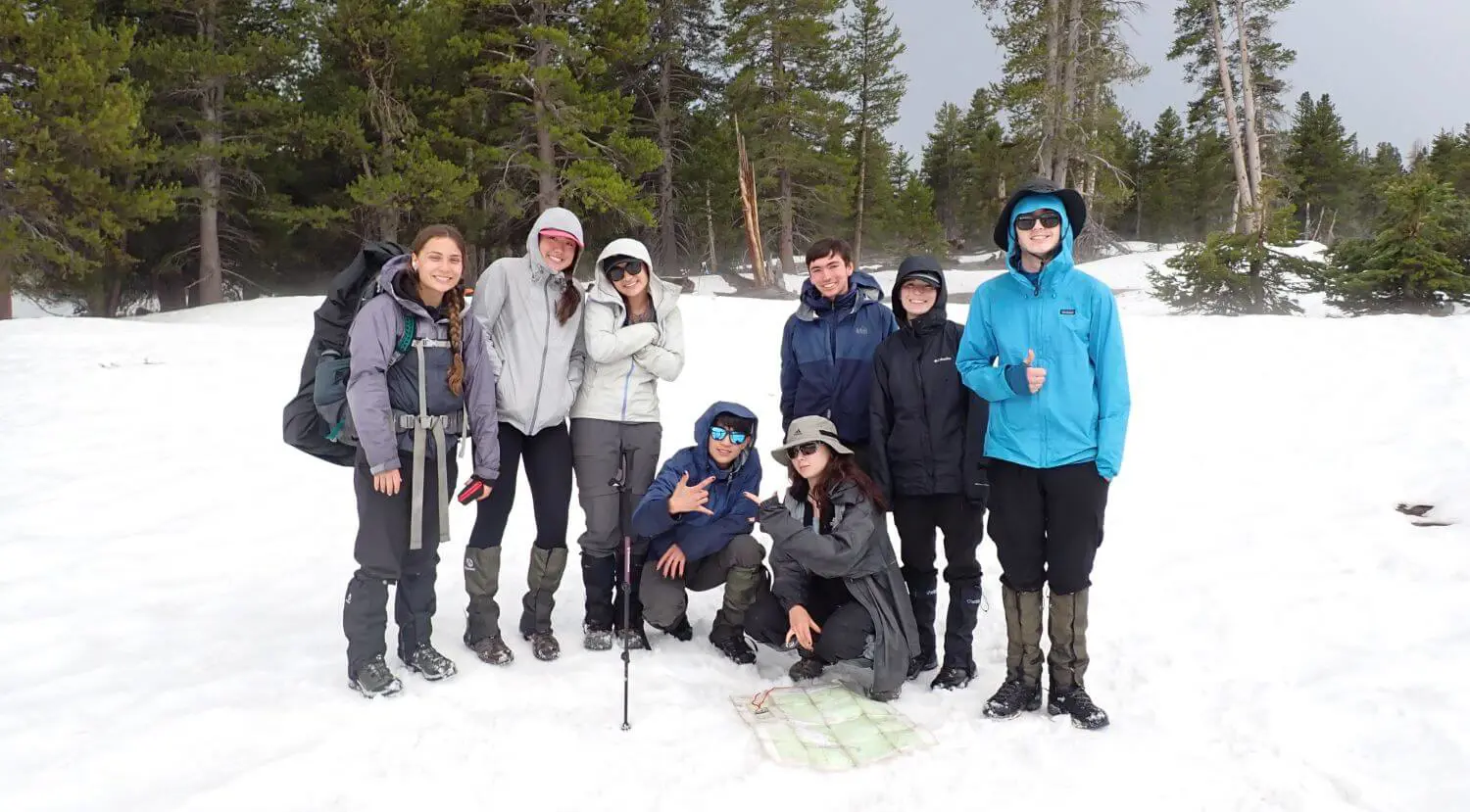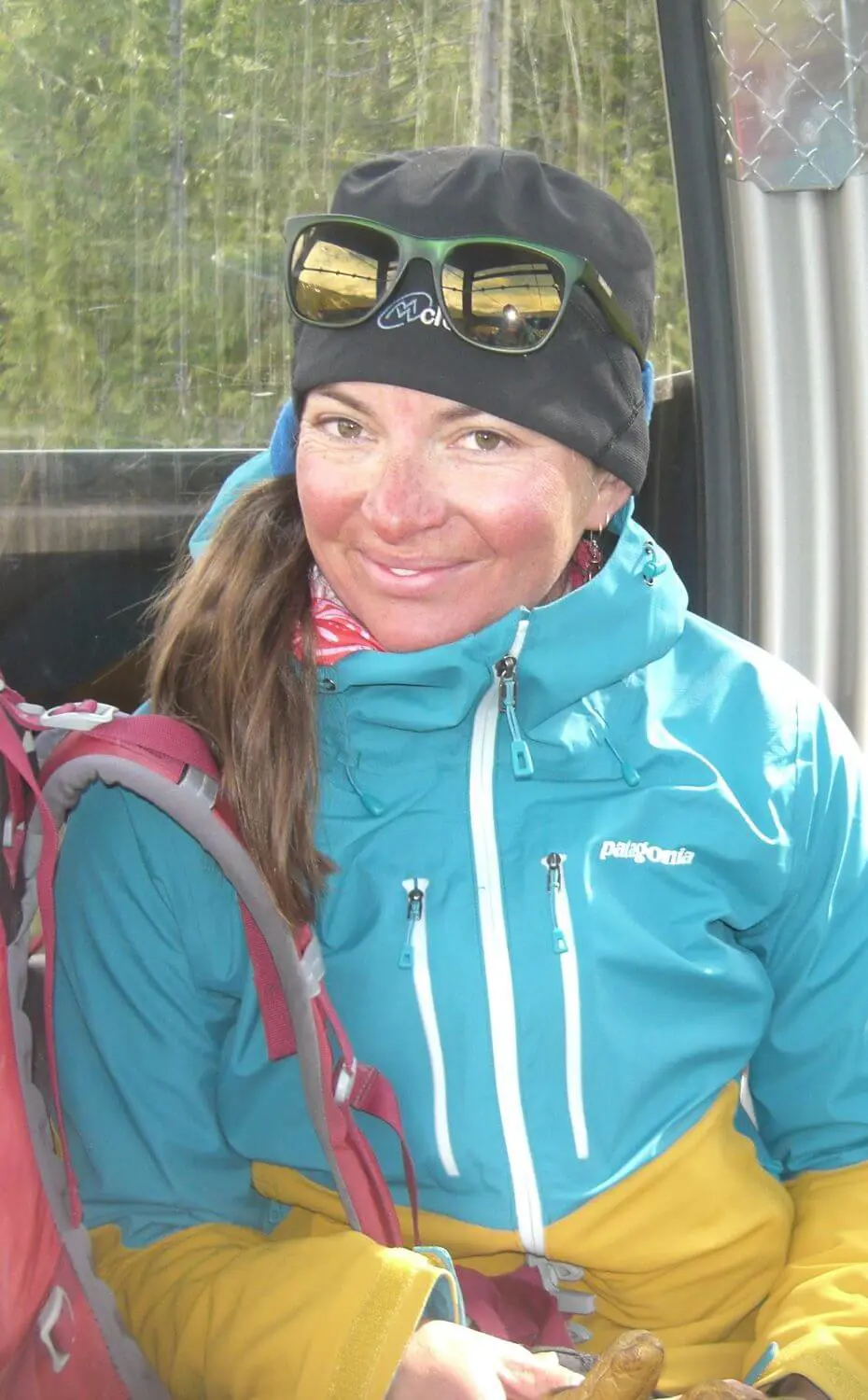Danner Bradshaw
Co-Director
Danner Bradshaw was named Co-Director of Chadwick’s Outdoor Education Program in September 2022. Danner began working at Chadwick in 2013, and has worked nearly every Chadwick Outdoor Education trip since then. He has led outdoor education programs for a number of independent schools, including Crossroads School for Arts & Sciences, Dunn School, Lakeside School, Sequoyah School, Teton Science School and The Athenian School.
Danner grew up in Alabama where he spent most of his childhood roaming the forests and beaches along the Gulf Coast. At the age of 15, he moved to the mountains of Vermont and attended The Putney School. There he fell even more in love with the outdoors and began leading orientation trips for incoming students. After going to college to study fine art photography, Danner realized that his true passion was outdoor experiences and helping others discover the beauty of the natural world. As an extension of this passion, Danner became fascinated with birds and natural science and majored in ornithology. He moved to Joshua Tree in 2005 to begin his career in outdoor education, working for many of the schools in the Los Angeles area. In the summers, he traveled to work avian research jobs at the Grand Teton National Park in Wyoming or Acadia National Park in Maine.
Emily Hargraves
Co-Director
Emily Hargraves was named Co-Director of Chadwick’s Outdoor Education Program in September 2022. Emily has led outdoor education and adventure travel trips for students in grades K-12 for 15+ years, including instructing Outdoor Education trips at Chadwick since 2010 and leading trips for independent schools, including Crossroads School of Arts & Sciences, Dunn School, Pear Tree Point School, Stevenson School and The Athenian School.
She has also led adventure travel trips around the world with Adventures Cross Country, American Leadership Forum, Backroads Travel, Chadwick International, Eastern Sierra Youth Outdoors and the New Canaan Nature Center. In addition, Emily owns a winter ski guiding company for women called Backcountry Babes. Emily develops outdoor education courses to foster camaraderie, self-confidence, creativity, character-building and fun among our students. She also works to ensure that our trips inspire personal growth, self-reflection and deep connection to the natural world, and develop students' citizenship in their communities. She maintains a Wilderness First Responder certification, CPR certification and Leave No Trace Certification. She is also an AIARE Avalanche Course Leader, and has completed Sierra Rescue Swiftwater Course, AMGA Alpine Skills Course and AMGA Ski Guide Course. She earned a Bachelor of Arts with distinction in art studio at Colorado College.
Drew Aaron
Outdoor Educator
Drew Aaron is passionate about facilitating character development, leadership and outdoor competencies, and creating safe opportunities for students to reach their full potential. He came to Chadwick as an outdoor education instructor in 2011 and has led teams of Middle and Upper School students in hiking and climbing. On every trip, Aaron is dedicated to facilitating Chadwick’s primary learning objectives and ensuring the safety of students. He has also instructed for the Crossroads School of Arts & Sciences, has experience guiding students through mountaineering and whitewater courses, and has previously lead clients on multi-day trips through ice, snow, rock, and glaciers. He is currently certified as a WFR (Wilderness First Responder), an LNT (Leave No Trace) Trainer and a SRT (Swift water Rescue Technician). He also possesses an AIARE Avalanche level II Certification and an SPI (Single Pitch Instructor) certification with AMGA.
Eli Baum
Outdoor Educator
Eli Baum is an outdoor educator from Berkeley, California. His passion for working with people in the outdoors started at the age of 16 in Yosemite National Park, when he became a camp counselor at the same camp he had been attending since age 8. Over the last decade, he has developed his career as an outdoor educator, finding joy in every step of the journey.
After graduating from Humboldt State University with a degree in Outdoor Education, Eli worked at several camps, schools, trail crews and organizations that furthered his desire to share the joy of the outdoors with as many people as possible. He is a certified natural interpreter, Wilderness First Responder and a "Leave No Trace" ambassador. Eli is proud of his career as a professional outdoor educator and looks forward to continuing to grow in this field during his time at Chadwick.
Sam Baum
Outdoor Educator
Growing up in central Pennsylvania, Sam spent many of his formative years exploring the woods, streams and rock climbing near his home. After high school, Sam attended the University of Vermont where he studied mechanical engineering. During a semester off from school, Sam participated in a NOLS semester course where he was first exposed to outdoor education. Ever since that experience, Sam has pursued a career in the outdoors. He has worked all over the country teaching backpacking, rock climbing and canoeing, as well as working as a mountain guide and wilderness therapy guide.
Kenzie Carson
Outdoor Educator
Kenzie is passionate about fostering student experiences that allow them to grow and connect with themselves, their community and the natural world. She began working for Chadwick in 2010 and has worked for over 10 years as an instructor, guide, logistician and faculty member for Outward Bound, Crossroads School for Arts & Sciences, Backcountry Babes and others. She has a Bachelor of Science degree in outdoor recreation and natural resource management, is a certified American Institute for Avalanche Research and Education instructor, professional member of the American Avalanche Association and is pursuing her AMGA Ski Guide accreditation. She is trained in nonviolent communication and working towards her massage therapy license. When not traveling in the mountains on skis or working with students, Kenzie is boating the rivers of the Northwest, riding her mountain bike and growing massive kale plants in her garden.
Luis Miguel Castro
Outdoor Educator
Luis Miguel Castro or "Luismi," was born in Colombia, holds citizenship in the U.S., has lived and worked in six countries, and considers himself a citizen of the world. He's been working in the field of experiential education for the past four years, covering a wide range of outdoor education programs for schools, service-learning trips and summer camps. He enjoys rock climbing, standup paddleboarding and kayaking, and backpacking in the mountains. He's also really into chess and logic riddles, and loves challenge his students to think outside the box.
Gen Dron-Smith
Outdoor Educator
Gen began working as a Chadwick instructor in the spring of 2015. Outdoor spaces for her have always brought an opportunity for both self-reflection and community-building. She grew up hiking and surfing in coastal Southern California and took full advantage of the opportunities to sea kayak, rock climb and backpack with the outdoor program at Cate School. After graduating from the Australian National University with degrees in Chinese and neuroscience, Gen moved to western China to explore developing climbing areas and lived in rural Dali and Yangshuo, where she began instructing youth outdoor education programs. Her career as an outdoor educator has since taken her throughout California’s mountains and deserts, as well as to Washington, Canada and South Korea. She is a certified Wilderness EMT and apprentice rock guide with the AMGA.
Anna Greenberg
Outdoor Educator
Anna started working with the Chadwick community in 2016 and has been guiding people of all ages in the outdoors since 2005. Born and raised in Washington, D.C., Anna comes from a large family in California and has spent most summers of her life exploring her beloved Sierra Nevada. Between childhoods spent seeking alpine lakes and a few formative years at a nature awareness camp in West Virginia, she developed a passion for wild and beautiful places, outdoor adventure and conservation. After graduating from Harvard University in 2007 with a degree in visual and environmental studies, Anna was burning to adventure, so she set off on a stint of traveling and outdoor education work. That stint turned into more than 15 years of teaching in the great outdoors, including leading canoe expeditions on desert rivers, backpacking trips in the mountains, and snorkeling and kayaking around coastal islands. She loves fostering a sense of comfort and resilience for youth in wild places. In 2019, she completed a master's degree in community and regional planning at the University of Oregon. She studies bicycle infrastructure, sustainable materials management and public lands leadership. In her free time, Anna loves traveling, music and river trips. Passionate about sustainable living, she has studied, resided in and helped build a number of natural buildings and eco-communities. She currently resides at her lavender farm in Eugene, OR. She has certifications in Wilderness First Response, CPR and Swift Water Rescue.
Mary Kate Groark
Outdoor Educator
Mary Kate grew up in Northern Alabama in the foothills of the Appalachian Mountains. She lived there until 2015, when she graduated from college and moved out West to begin working as an outdoor educator. MK has been working in the outdoors ever since, connecting people to nature from the California deserts to the Alaskan fjords. Her favorite parts about this work are being able to share beautiful experiences with others, seeing the nature-inspired wonder and awe come alive in her students, as well as helping people grow and reach their potential. She wholeheartedly believes the outdoors is a great classroom to develop character, community and an intimate understanding of the world around you. When not at work, MK enjoys living on the road, traveling to foreign countries, climbing, backpacking and cooking feasts with friends. MK is a certified Wilderness First Responder and advanced open water diver. Lastly, she is immensely grateful to be a part of this community and working with Chadwick students.
Alyssa Grove
Outdoor Educator
Alyssa Grove has been growing and working in the outdoor/experiential education field for the last 10 years. Starting with education-based internships with both the National Forest Service and National Park Service, her path took off from there. Her passion for conservation and place-based education has led her to work throughout California, Oregon, North Carolina and Wyoming, as well as abroad in New Zealand. Alyssa spends most of the year coordinating and leading environmental education field experiences in Bend, Oregon, and in her free time she loves to hike with her dog and study plants, canoe lazy rivers, adventure Nordic ski, and garden. Alyssa holds a B.S. in environmental studies with a concentration in biology, and joined Chadwick in spring 2019. She is excited to inspire and lead students in Outdoor Education.
Nick Jump
Outdoor Educator
Nick first discovered the restorative power of nature while spending summers in the Catskills with his brother, sister and father to escape the Texas heat. There, he learned that spending time outdoors encourages us to work through our perceived limitations and come to an unfamiliar and level playing field to learn more about each other, ourselves and how we are part of the natural world. After graduating from Texas State, Nick discovered outdoor education and quickly realized his mission to bring students into the outdoors to foster their connection with the natural world and their best selves. Nick has worked for Chadwick since 2015 and passionately supports the value the school puts on the outdoors as a vehicle for education and growth. Nick has chosen outdoor education as his career and works for Crossroads School for the Arts & Sciences, Sequoyah School, Boojum Institute and the Athenian School. He believes that with an open mind, the outdoors allows a unique container to be created where humans feel empowered to explore their own gifts and aid in the process of self-discovery. Nick is certified in swift water rescue, as a wilderness first responder and AMGA single pitch instructor, and a PADI open water diver.
Matt Lounsbury
Outdoor Educator
Nature has always been central to Matt Lounsbury's life. Growing up in a small village of a few hundred in rural Vermont, life was dictated by the seasons and full of hunting and fishing. Following a degree in psychology and fine-art glassblowing, he left the northeast to search adventure in the greater world. This led to work in places such as Mexico, Peru, India and Belize, guiding a host of different outdoor sports, an adventure sailing across the Atlantic Ocean and extensive time working with disadvantaged youth from Alaska's most remote villages. This has afforded Matt a life of continual learning and adventure. In his free time, Matt enjoys rock climbing, exploring whitewater, taking classes and making art with his homemade metal foundry. Matt feels incredibly fortunate to be a part of the Chadwick community and to share his passion for our natural world, simple living and creativity with the future leaders of America.
Ryan Mann
Outdoor Educator
Through his own experience as a student on an outdoor education semester program, Ryan experienced firsthand the incredible growth that comes from confronting challenge in wilderness settings. In 2014, Ryan moved from Maryland to the West Coast to pursue a career in outdoor education. He went on to gain experience as an educator by leading students of diverse ages and backgrounds on trips in course areas spanning from the Mojave Desert of the Southwest to the Cascade Range of Washington and British Columbia. A student of art, Ryan is passionate about bringing students’ creativity and individuality into their interactions with nature. Ryan has instructed for Chadwick’s Outdoor Education Program since 2017 and feels incredibly privileged to continue to grow through fostering students’ understanding of themselves, their communities and the natural world. Ryan has received training and certification from NOLS, the LNT Center for Outdoor Ethics, the AMGA, and AIARE.
Karen Morse
Outdoor Educator
Karen grew up playing in the rain in Portland, Oregon and spent her childhood exploring the forests of the Pacific Northwest. After graduating college with a double major in communications and cultural studies, she began working year-round in outdoor education and recreation. She started instructing rafting, backpacking and mountaineering expeditions with Outward Bound in 2011 and began working for Chadwick Outdoor Education in 2015. Watching students tap into their potential and develop meaningful relationships with their peers and environment is what keeps Karen coming back to Outdoor Education year after year.
When not working at Chadwick, Karen spends her time ski patrolling, teaching avalanche awareness and swiftwater rescue courses, and tending to her house plants.
Kyle Murphy
Outdoor Educator
Kyle Murphy is a wilderness educator from Sacramento, California, who has led trips in the outdoors since 2015. He began his career guiding hiking trips for a local yoga studio, where he discovered his passion for wilderness leadership. Later, he joined Sacramento State University's outdoor program, Peak Adventures, where he worked as an outdoor trip leader, challenge center facilitator and team lead. During his time at Peak Adventures, he gained valuable knowledge, public speaking skills and leadership experience while working with diverse populations. Kyle is also a head guide for Peak Adventures and American White Water Expeditions on the South Fork of the American River, where he accumulated over 4,000 hours of experience in professional wilderness guiding, ropes course facilitation and teaching whitewater guide school. He holds an AA in wilderness education (focus in climbing) from Lake Tahoe Community College, an AA in interpersonal communication from American River College, and a BA in small group communication with a focus on conflict resolution from Sacramento State University. He is also a California Certified substitute teacher, has completed 200 hours of yoga teacher training, and holds certifications in WFR, CPR, AIARE 1, LNT Trainer and ACA Swift Water Rescue.
Nate Pakula
Outdoor Educator
Nate hails from the small state of Rhode Island and grew up playing in the lush mountain ranges of New England. In 2004, Nate moved to Vermont to attend the University of Vermont. Upon finishing his B.A. in sociology and community and international development, he moved to California to begin what became a career in outdoor education. Over the past 12 years, he has worked for a number of outdoor programs and has now found a home with Chadwick. Nate loves inspiring his students and helping them connect to the natural world through natural history, rock climbing and backpacking. Between Chadwick Outdoor Education trips, Nate works as a rock climbing guide in Joshua Tree National Park. He currently lives in Joshua Tree, CA, and goes to play outside whenever he’s not working.
Erin Rush
Outdoor Educator
Erin Rush grew up in rural Kentucky and developed a love for outdoor adventure at an early age. She earned a degree in hospitality/tourism management and sustainable agriculture from the University of Kentucky. Soon after her graduation in 2008, Erin began leading groups of teens on canoe and backpacking trips in national parks and forests throughout the western United States and Canada. She's been involved with outdoor education ever since, in the role of instructor, guide and program coordinator. She is passionate about creating a sense of community and connection among students and with the natural world. Erin is a "Leave No Trace" trainer and is Wilderness First Responder and CPR certified.
Caitlin S.
Outdoor Educator
Caitlin loves spending time with people in the outdoors. She aspires to help others cultivate the connections that can happen when we are away from distractions and able to be authentic. Since 2006, she has been leading backpacking, rock climbing and sea kayaking courses and trainings, in addition to serving in administrative and programmatic roles at outdoor organizations. Since 2015, she has also worked in mindfulness education, bringing meditation and relational mindfulness skills to young adults. Caitlin brings experience from well-respected schools and non-profit organizations including Stanford University, Outward Bound and Inward Bound Mindfulness Education. She holds a Wilderness First Responder certification, is a "Leave No Trace" master educator, has completed a 200-hour Yoga Teacher Training and has taken the AMGA Single Pitch Instructor course. She holds a B.A. in psychology and a certificate in Community Sustainability Management.
Lawrence Schuessler
Outdoor Educator
Lawrence Schuessler has spent the past 25+ years guiding and instructing people in wild spaces all over the world. Lawrence has a B.A. in adventure education from Prescott College, and an M.S. in outdoor education sustainable leadership from Gaia University. He has taught for Stanford University, Prescott College, UCLA, UCSF, the Eagle Rock School, the Dunn School, The Crossroads School of Arts & Sciences, Outward Bound, NOLS and Inward Bound Mindfulness Education, to name a few. His skillset includes program operations, program delivery and creating curriculum, as well teaching backpacking, rock climbing, mountaineering and all the backcountry essentials. In addition to wilderness guiding, Lawrence has spent the past 15 years practicing Vipassana meditation and various styles of yoga. Lawrence holds certifications as an American Mountain Guide Association Single Pitch Instructor, Wilderness First Responder, Avalanche 1, CPR, "Leave No Trace" master trainer, 2 Stars British Canoe Association and has attended NOLS Risk Management Training for Administrators. Lawrence is passionate about experiential education in various forms and is grateful he is privileged enough to be able to do this work. When Lawrence is not working, he can be found watercolor painting, riding his bicycle or hanging out with his partner on an adventure in Joshua Tree.
Joy Seward
Outdoor Educator
There’s nothing Joy loves more than a good adventure that covers a lot of ground in the mountains. Joy first stepped into the education field when she earned her bachelor's degree in communications and social science. During this time, she completed her degree in Scotland and discovered sustainable outdoor education. Her career is now focused on engaging in outdoor education work for many organizations, locations and schools, including NOLS, OutWard-Bound, Wilderness Adventures and Naturalists at Large.
She brings to Chadwick her experience as an educator and backcountry wilderness guide for youth of all ages. She holds a passion for using nature as a teaching catalyst for personal growth, diversity understanding, authentic engagement and a sense of connection to the global ecosystem. Her driving purpose is to harness her years of experience to cultivate creative mindsets and help shape educational experiences using the surrounding environment as a classroom.
Shane Stump
Outdoor Educator
A native of Santa Barbara, California, Shane Stump has been an avid explorer and nature lover since early childhood. He has spent most of his life adventuring and exploring all over the US, fly-fishing, mountaineering, canoeing and generally enjoying the beauty and majesty of the wilderness wherever he goes. He has been leading wilderness trips for over 19 years and joined Chadwick over 12 years ago, where he works as a highly-stoked field instructor. Shane has a gift for making people laugh and helping students discover their hidden strengths on course. He also believes in the power of nature to heal and inspire. He graduated from St. John's College in 2002 with a degree in philosophy. When he's not working, Shane keeps busy surfing, reading novels, watercoloring, traveling the world, playing basketball and guitar, and sitting still to listen and watch the birds sing and the waves roll in. Always on the lookout to find opportunities lurking just below the surface of all things, Shane describes himself as stoked, subterranean and sensitive. Each day is a miracle and with this outlook there is no wonder that Shane keeps coming back to bring his own style of service to the world.
Jamie Tinnin
Outdoor Educator
Jamie has been teaching students in the field of outdoor education since 2015. He has worked for Prescott College’s Orientation Program, a three-week interdisciplinary backpacking course, as both an instructor and course director. Jamie has taught in Prescott College’s Adventure Education program since 2019, instructing both field courses and teaching on campus. In addition to joining Chadwick Outdoor Education in 2022, Jamie has instructed for NOLS, Northwest Outward Bound School and Crossroads School for the Arts & Sciences. Jamie is primarily a backpacking and rafting instructor. He holds a BFA in Creative Writing from Prescott College and is certified in CPR and as a Wilderness First Responder.
Ian Zatarain
Outdoor Educator
Ian Zatarain enjoys international travel, rock climbing, backcountry splitboarding, trail running and motorcycle riding. He feels the most inspired when he connects and spends time with indigenous populations in Colombia, supporting them with community-focused service projects. He also founded the educational non-profit, The Mojave Center, in Nevada where he teaches courses on sustainable living in the desert, natural building and rainwater harvesting. When he is not traveling abroad, working for the Wilderness Medicine Training Center or rock climbing, Ian works as an outdoor educator in California and South Korea for a variety of non-profit organizations. Moreover, Ian owns and teaches for "Guardian - Cultural Expeditions & Wilderness Medicine," an international expedition company based in Colombia and the U.S. focused on wilderness medicine certifications and remote service projects.










































